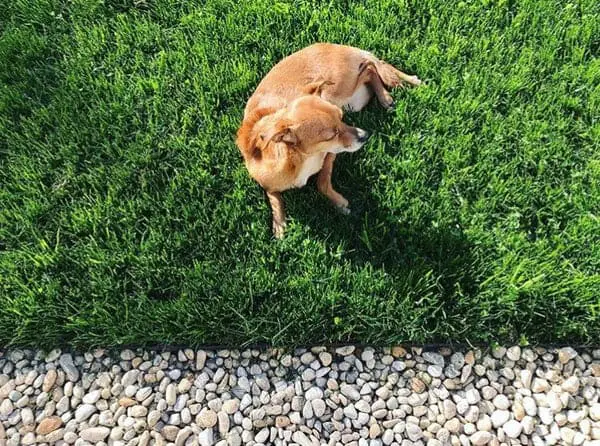Introduction to Clover Lawns
Clover lawns are gaining popularity among pet owners and garden enthusiasts alike. Known for their durability, low maintenance, and eco-friendly attributes, clover lawns provide a viable alternative to traditional grass lawns. This article delves into the myriad benefits of clover lawns, their maintenance, and why they are an excellent choice for pet owners.
Benefits of Clover Lawns
Pet-Friendly and Safe
One of the primary concerns for pet owners is ensuring that their pets have a safe environment to play in. Clover lawns are non-toxic and resilient, making them a perfect ground cover for pets. Unlike some traditional grass types that can be harmful if ingested, clover is entirely safe for dogs and cats. Additionally, clover lawns are soft and comfortable, providing a gentle surface for pets to run and play.
Durability and Resilience
Clover is incredibly durable and can withstand heavy foot traffic, which is a common issue for pet owners. Traditional grass often wears out quickly, developing unsightly bare patches. In contrast, clover’s robust nature allows it to bounce back from the wear and tear caused by active pets. This resilience ensures that your lawn remains lush and green throughout the year.
Low Maintenance
One of the standout features of clover lawns is their low maintenance requirements. Clover naturally crowds out weeds, reducing the need for herbicides. It also requires less mowing than traditional grass, as it typically grows to a maximum height of 8 inches. This not only saves time but also reduces the environmental impact associated with lawn care.
Eco-Friendly
Clover is a nitrogen-fixing plant, meaning it can convert atmospheric nitrogen into a form usable by plants. This natural fertilization reduces the need for chemical fertilizers, promoting a healthier environment. Clover lawns also require less water than traditional grass, making them a sustainable choice, especially in areas prone to drought.
Establishing a Clover Lawn
Choosing the Right Clover
Several types of clover can be used for lawns, with white clover (Trifolium repens) being the most popular. It is low-growing, hardy, and has a pleasant appearance. Microclover is another excellent option, as it has all the benefits of white clover but with smaller leaves and a more compact growth habit.
Soil Preparation
Preparing the soil is crucial for establishing a healthy clover lawn. Clover prefers well-drained soil with a pH between 6.0 and 7.0. Conduct a soil test to determine its pH and amend accordingly. Aerating the soil can also improve its structure, promoting better root growth.
Seeding and Planting
Clover seeds are best sown in early spring or late summer when temperatures are moderate. To achieve even coverage, mix the seeds with sand or sawdust. Spread the mixture evenly across the prepared soil and lightly rake it in. Water the area gently to ensure the seeds settle into the soil.
Initial Care
During the germination period, keep the soil consistently moist but not waterlogged. Clover seeds typically germinate within 7-10 days. Once established, reduce the watering frequency, as clover is relatively drought-tolerant.
Maintaining a Clover Lawn
Watering and Fertilization
After the initial establishment phase, clover lawns require minimal watering. Water deeply but infrequently, aiming for about 1 inch of water per week. Since clover fixes its own nitrogen, additional fertilization is generally unnecessary. However, if your soil is deficient in other nutrients, a balanced, organic fertilizer can be applied sparingly.
Mowing
Clover lawns do not require frequent mowing. Mow your clover lawn to a height of 3-4 inches, which helps maintain its lush appearance and prevents it from becoming too tall. Regular mowing also encourages dense growth, further reducing weed intrusion.
Weed Control
One of the advantages of clover is its ability to suppress weeds naturally. However, occasional weeds may still appear. Hand-pulling is an effective method for dealing with these intruders. Avoid using herbicides, as they can harm the clover.
Pest and Disease Management
Clover is relatively resistant to pests and diseases. Aphids and root rot can occasionally pose problems, but these are typically manageable with natural remedies. Introducing beneficial insects like ladybugs can help control aphid populations, while ensuring proper soil drainage can prevent root rot.
Clover Lawn vs. Traditional Grass Lawn
Cost-Effectiveness
Clover lawns are cost-effective compared to traditional grass lawns. The reduced need for fertilizers, herbicides, and frequent mowing translates into significant savings on lawn care expenses. Additionally, the resilience and low maintenance of clover mean less money spent on repairs and replacements.
Environmental Impact
Traditional grass lawns often require substantial water, fertilizers, and pesticides, which can have detrimental environmental effects. Clover lawns, on the other hand, support biodiversity, reduce the need for chemicals, and conserve water. This makes clover a greener choice for eco-conscious homeowners.
Aesthetic Appeal
Clover lawns have a unique aesthetic appeal with their lush, green carpet-like appearance and delicate white flowers. They provide a charming and natural look that many homeowners find attractive. The flowers also attract pollinators like bees, contributing to a healthier ecosystem.
Conclusion
Clover lawns offer a safe, durable, and eco-friendly alternative to traditional grass lawns, making them an ideal choice for pet owners. Their low maintenance requirements, cost-effectiveness, and environmental benefits further enhance their appeal. By choosing clover, you not only create a beautiful and resilient lawn but also contribute positively to the environment.


